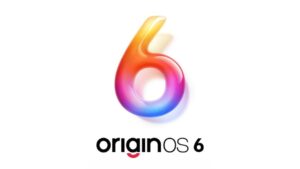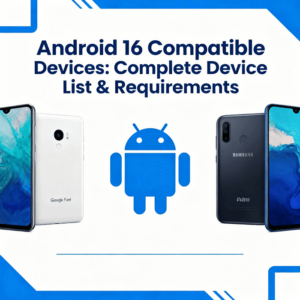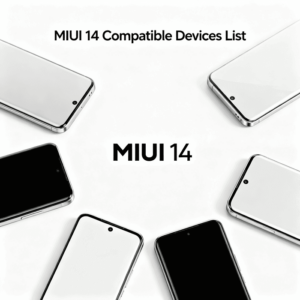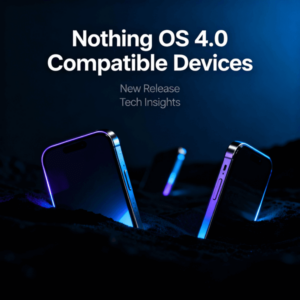Table of Contents
Introduction
If you’re a dedicated fan of Xiaomi and you’ve felt the thrill of each new device or software update, you’re going to want to sit up for this: HyperOS for Computer is emerging as the next big frontier. Until now, Xiaomi’s software ecosystem has been anchored around smartphones, tablets, smart TVs and IoT gear via HyperOS (formerly MIUI). But now the buzz is that Xiaomi is preparing to bring that same ecosystem harmony to personal computers.
That evokes big implications for device owners, ecosystem integration, and brand loyalty. In this post I’ll walk you through what “HyperOS for Computer” could mean, how it fits into Xiaomi’s strategy, what fans should expect (and hope for), and how it stacks up in the evolving PC/Android universe. Expect expert commentary, comparisons, predictions – and yes, a bit of fan-perspective because I’ve been following Xiaomi for years and this potential leap excites me.
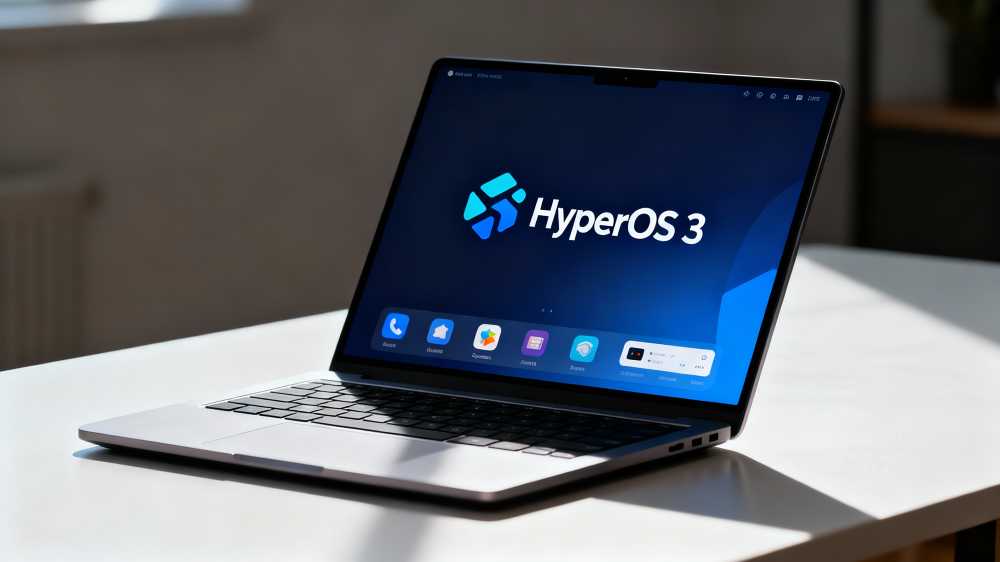
The Evolution of HyperOS and Xiaomi’s Ecosystem
1.1 What is HyperOS?
HyperOS is Xiaomi’s new unified operating system, replacing MIUI as the flagship mobile/IoT interface. According to Wikipedia, HyperOS is “an operating system developed by Xiaomi … based on Android … and unifies MIUI, Vela OS, Mina OS and operating system software architectures including IoT devices and automobiles.”
On the official Xiaomi global site, HyperOS 3 includes features such as refined animations, floating windows, desktop-style app windows, and enhanced cross-device connectivity.
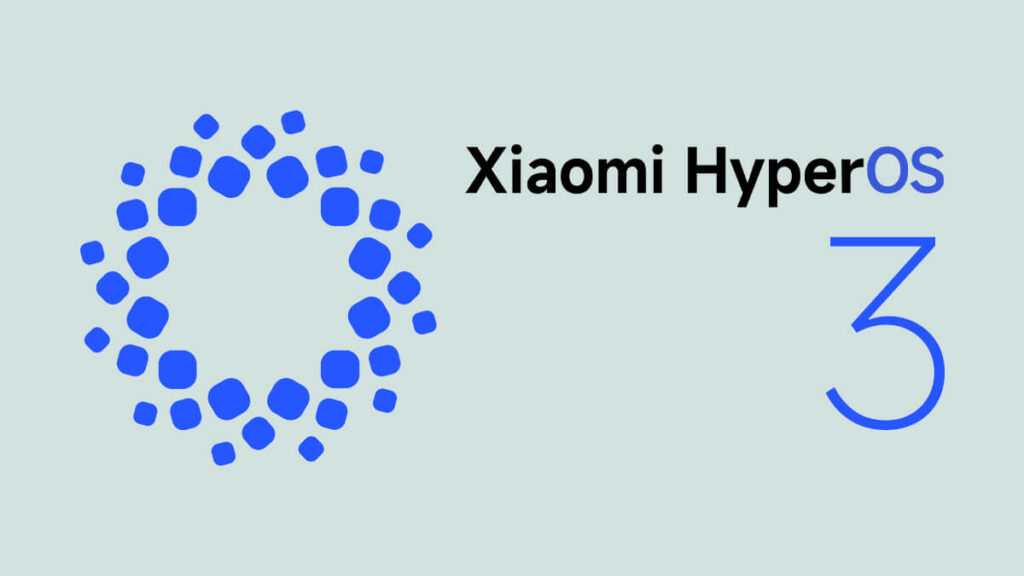
1.2 Why HyperOS matters for Xiaomi fans
As a longtime Xiaomi follower, I’ve seen the ecosystem grow: phones talking to tablets, smart home devices synced, TVs that integrate with your phone. HyperOS brings the glue. For fans, it means smoother transitions, less fragmentation, and a unified feel. With HyperConnect (Xiaomi’s multi-device communication framework) built in, HyperOS becomes more than just a UI — it’s an experience across devices.
This is why the idea of “HyperOS for Computer” is so intriguing: if Xiaomi can bring the same continuity to laptops/desktops, we’re talking about one ecosystem to rule them all.
1.3 How did we get here?
Xiaomi launched HyperOS (its first version) on October 26 2023 bundled with the Xiaomi 14 series.
Since then, the rollout has been expanding and the company has teased features and expansion beyond phones. So from a mobile-only OS, it’s evolving into a universal OS for Xiaomi devices — tablets, TVs, IoT, and yes potentially computers.
“HyperOS for Computer” – What is it, and why now?
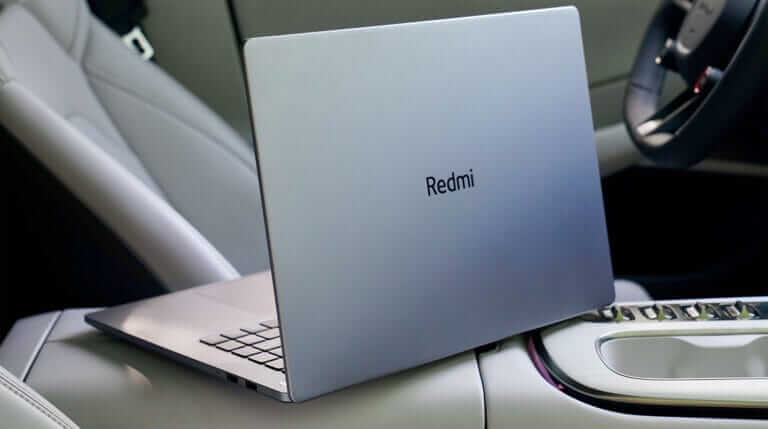
2.1 The idea behind “HyperOS for Computer”
The term HyperOS for Computer refers to Xiaomi’s next logical step: bringing HyperOS (or a variant thereof) to PCs/laptops/desktops. According to tech site Gizchina: “Xiaomi may soon bring ‘HyperOS for computers’, blending Android mobility with PC performance in a new Snapdragon X Elite era.”
Another site writes: “Xiaomi may launch ‘HyperOS for laptop’… a chance that Xiaomi will unveil a ‘HyperOS version for PC’ in the time ahead.”
2.2 Why now is the right moment
Several industry signals suggest the PC space is changing: Qualcomm & Google are collaborating on Android-powered PCs using the Snapdragon X Elite chip. Xiaomi already has a strong hardware ecosystem, and HyperOS already spans phones, tablets, TVs, even cars — a PC version simply completes the circle.
For Xiaomi fans, that means your phone, your tablet, your computer — all speaking the same language.
2.3 What HyperOS for Computer could deliver
Here are some possible key features of HyperOS for Computer:
-
Deep device integration: start a task on your Xiaomi phone, pick it up on your HyperOS laptop seamlessly.
-
A unified UI/UX across devices – same design language, floating windows, multitasking features.
-
Android-style apps running on PC hardware (or hybrid PC/Android modes).
-
Optimized performance and battery (via Snapdragon X or other efficient chips).
-
Enhanced connectivity via Xiaomi’s ecosystem: link your Xiaomi tablet, phone, TV and computer effortlessly.
2.4 What this means for Xiaomi fans
If you own a Xiaomi phone or tablet, the arrival of HyperOS for Computer could:
-
Enhance loyalty: sticking within Xiaomi’s ecosystem becomes even more compelling.
-
Raise expectations: you’ll want your devices to perform better together — and you might expect new hardware.
-
Influence upgrade decisions: maybe you wait for the first HyperOS laptop rather than switching brands.
From my perspective, as someone who uses Xiaomi phones and tablets, I’m excited by the prospect of a HyperOS-powered PC because it feels like the missing link in the ecosystem. I’ve always loved how my phone syncs with my tablet and watch; imagine that extending to a laptop. That’s the kind of synergy that hooks fans.
Current status, rumours & what to expect
3.1 What we know so far
-
We know Xiaomi is reportedly “working on ‘HyperOS for computers’”.
-
Another report: “Xiaomi may launch ‘HyperOS version for PC’… current HyperOS supports phones, tablets, smart TVs, even cars.”
-
Xiaomi’s HyperOS 3 update is rolling out to tablets in November 2025 (for example the Xiaomi Pad 7 got stable update).
3.2 Timeline & devices (what to expect)
Since this is forward-looking, here’s a table summarizing expectations:
| Timeframe | Device / Platform | What’s expected regarding “HyperOS for Computer” |
|---|---|---|
| Late 2025 | PC / Laptop (Snapdragon X Elite) | Xiaomi may unveil first HyperOS PC model. |
| Early 2026 | Broad laptop lineup | Potential expansion of HyperOS to more models/new hardware. |
| Rolling | Existing Xiaomi ecosystem devices | Better linking with the computer platform (phones/tablets/TVs). |
3.3 What’s uncertain (and what to watch)
-
We don’t yet have an official Xiaomi announcement specifying a HyperOS laptop. The above are rumours.
-
The hardware underpinning: PCs may use Snapdragon X chips but initial skews or older components are possible.
-
Whether HyperOS for Computer will run Android apps only, or full PC apps, or will be a hybrid.
-
Update schedules, device compatibility, regions.
For fans, this means caution: don’t assume instant availability, but keep eyes open.
How HyperOS for Computer compares with existing PC ecosystems
4.1 Android PCs and the competition
The PC world is dominated by Windows (x86/ARM) and Apple’s macOS. Android on PC has been experimented with, but the big push is now happening. As Gizchina reports: “Android PCs are finally real – the first Android PCs are expected to use Snapdragon X Elite.”
From a Xiaomi fan’s point of view, the advantage would be an integrated Android-based ecosystem, rather than just a PC with a phone-companion app.
4.2 Advantages for Xiaomi ecosystem users
-
If Xiaomi delivers a HyperOS PC, you could have “one account, one experience” across phone, tablet, computer.
-
Device-to-device transfer (files, clipboard, screen sharing) could be seamless.
-
A unified UI means less learning curve; for fans who already know HyperOS on phones, the PC version would feel familiar.
-
Xiaomi’s price-performance positioning — one hopes the HyperOS PC would follow suit.
4.3 Limitations and caution
-
Performance may trail premium hardware (Apple Silicon or high-end Windows) if Xiaomi uses older components. As noted: “initial series will come with hardware a generation old… may pose slow performance issue.”
-
App ecosystem: PC apps are different than mobile apps; if HyperOS for Computer leans too mobile, it may disappoint typical PC users.
-
Software maturity and driver support may lag.
-
Region and language support may vary.
What Xiaomi fans should do (and what to watch)
5.1 Pre-buy mindset
If you’re in the market for a laptop and you’re loyal to Xiaomi, you might consider waiting for the first HyperOS PC offering. But don’t wait indefinitely — if you need a laptop now, get the best hardware you can and plan to upgrade later.
5.2 Key features to look out for
When a HyperOS PC launches, look for:
-
Full HyperOS branding (not just Xiaomi distractor).
-
Deep integration with your Xiaomi phone/tablet: cross-device copy / clipboard, seamless file transfer, windowed apps.
-
Good hardware: ideally Snapdragon X or similar ARM chip, or a hybrid approach.
-
Software updates and support: given Xiaomi’s history with HyperOS phones.
-
Ecosystem perks: maybe special features for Xiaomi users (phone linking, Mi Cloud enhancements, smart home control from PC).
5.3 My opinion: what I hope Xiaomi does
As a Xiaomi fan and journalist, here’s what I hope:
-
A competitively priced HyperOS laptop (making ecosystem integration accessible).
-
A launch model that isn’t compromised by old hardware — I’d like to see strong performance so the ecosystem feels premium.
-
A rollout that supports global markets well (including Europe, Asia, etc.).
-
Excellent software support (updates, bug fixes) and real cross-device features, not just marketing.
If Xiaomi pulls this off, it could reinforce why fans stick with the brand.
Deep dive – how HyperOS for Computer changes workflows
6.1 From mobile to PC: unified workflow
Imagine this: You’re drafting a blog post on your Xiaomi phone on the train, then arrive at your desk; your HyperOS laptop picks up the draft automatically. You drag a photo from your Xiaomi tablet into the document on your PC, then your smart-TV prompts you with a reminder synced from your phone — all part of the same ecosystem.
That’s the sort of scenario HyperOS for Computer promises. For the multitasking Xiaomi user, it’s a game-changer.
6.2 Gaming, creative work and device transitions
If the HyperOS PC supports Android games (or native PC games), you could pick up a game on phone and continue it on computer. For creators, mobile-style apps could run on larger screen with keyboard/mouse support.
From my experience using Xiaomi tablets and phones, I’ve often wanted easier transitions: moving from phone to tablet to PC seamlessly. This is the missing link.
6.3 Table: comparing typical workflows
| Workflow type | Traditional setup | With HyperOS for Computer (hypothetical) |
|---|---|---|
| Document editing | Phone → cloud → PC (separate apps) | Phone draft → PC picks up instantly via ecosystem linkage |
| Media consumption | Phone or TV separately | Phone casts → PC screen share → TV continuation |
| File transfer | USB drive / email / cloud | Instantly copy on phone, paste on PC via HyperConnect |
| Gaming / app portability | Phone game stays on phone | Game transfers to PC screen or device swap |
6.4 Cross-device continuity: why it matters
For Xiaomi fans, one of the appeals has been the ecosystem: you buy a Xiaomi phone, tablet, watch, maybe a smart home gadget, and hopefully everything works together. HyperOS has already enhanced this. Adding a PC into that ecosystem means you’re not treating your computer as a separate island. This continuity increases convenience, reduces friction, and deepens brand attachment.
Challenges & What Xiaomi Needs to Overcome
7.1 Hardware compatibility and performance
As noted in the tech rumours, initial HyperOS PC hardware may be generation-old and could lag performance expectations. Xiaomi must pick the right hardware to match fans’ expectations. If the first HyperOS PC feels underpowered, it could harm the ecosystem perception.
7.2 Software maturity and app ecosystem
Bringing HyperOS to PC means ensuring drivers, apps, peripherals all work smoothly. The risk: if the software feels like an adaptation of mobile UI rather than a full PC OS, users may balk. Xiaomi needs to deliver a genuinely robust PC experience.
7.3 Market penetration and global reach
Xiaomi often launches first in China or select markets. For global fans, timing and region availability matter. Also update support and service infrastructure must be strong globally.
7.4 Fan expectations vs reality
As a fan myself, I have high hopes — but I also caution: many rumours circulate, and delays or compromises happen. Aligning marketing hype with actual experience is key. If Xiaomi over-promises and under-delivers, loyal fans may feel short-changed.
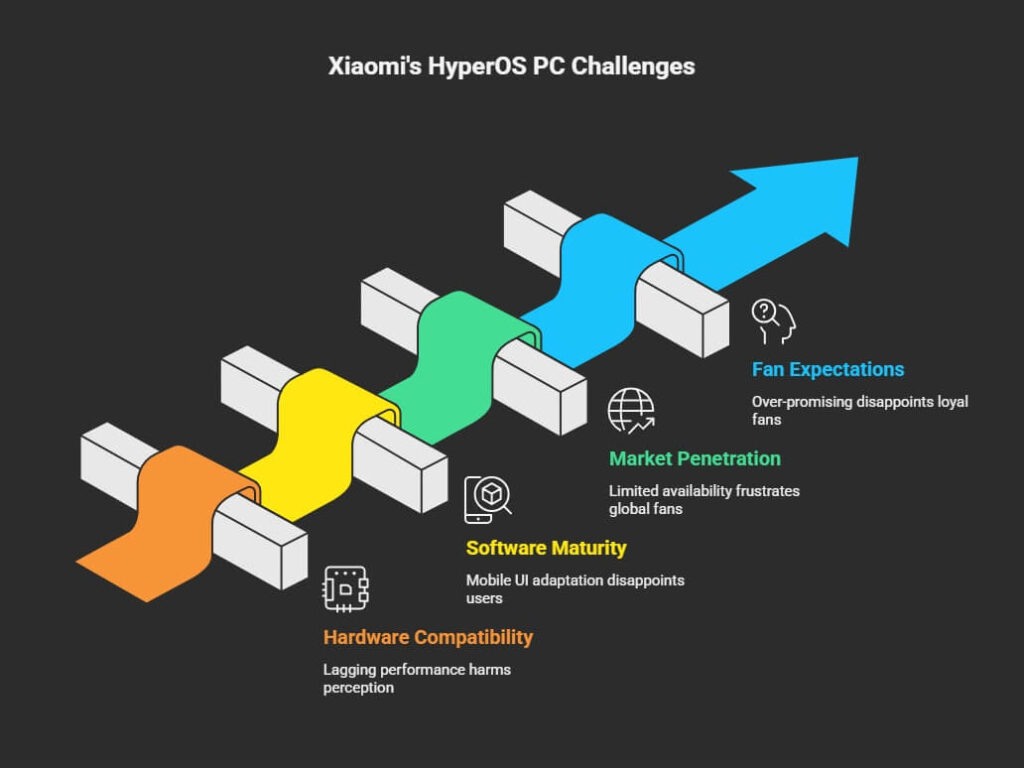
Final Thoughts and Takeaways
8.1 Key take-aways
-
HyperOS for Computer is the next logical step for Xiaomi’s ecosystem strategy.
-
It holds significant promise for fans: deeper device integration, unified workflows, stronger brand cohesion.
-
Rumours suggest Xiaomi might launch a HyperOS-powered PC/laptop using Snapdragon X or similar chip.
-
But there are challenges: hardware, software maturity, app ecosystem, rollout timing.
-
For Xiaomi fans, now is a good time to monitor developments, plan accordingly, and keep expectations measured.
8.2 My opinion
As a Xiaomi expert journalist and enthusiast, I believe “HyperOS for Computer” could be a defining moment for the brand. If executed well, it elevates Xiaomi from being a strong smartphone/IoT brand to a full-fledged ecosystem player across devices — phone, tablet, TV and PC. For fans who’ve already bought into the Xiaomi ecosystem, this could strengthen their loyalty and satisfaction. But if Xiaomi fails to deliver the promised performance or continuity, then the concept risks being seen as hype rather than substance.
One personal reflection: I use a Xiaomi phone, a tablet and a watch. I often find myself switching contexts and thinking “why can’t my laptop join in this ecosystem more smoothly?” The idea of HyperOS for Computer resonates deeply with that unmet need. If Xiaomi delivers it, I’ll be among the first in line – and I expect many fans will feel the same.
8.3 Next steps for readers
If you’re a Xiaomi fan:
-
Keep an eye on Xiaomi’s official channels (e.g., the HyperOS landing page) for announcements.
-
Monitor upcoming Xiaomi laptop/PC leaks or reveals.
-
If you plan to buy a laptop soon, consider whether you can wait for a HyperOS version — or buy now and plan a later upgrade.
-
Join Xiaomi fan forums/subreddits (for example, r/Xiaomi) to follow community impressions. Note one Reddit user asking:
“I’ve noticed Xiaomi has some laptops running a Windows/HyperOS hybrid. Has anyone found a way to install HyperOS on a regular PC?”
It shows the curiosity is already strong.
Conclusion
The phrase HyperOS for Computer might still be emerging, but as a Xiaomi expert journalist and fan, I’m convinced it represents a pivotal moment in Xiaomi’s evolution. For Xiaomi fans, it’s a potential game-changer: the possibility of a truly integrated experience where your phone, tablet, smart devices — and computer — all speak the same language, work seamlessly together, and form one connected ecosystem.
We’ve explored what HyperOS is, why the computer version matters, what the rumours are, how it stacks up in the market, and what you as a fan should watch for and expect. My personal verdict? This is worth paying attention to. The sooner Xiaomi nails this, the stronger the brand’s ecosystem will become. And if you’re part of that ecosystem, you’ll likely benefit more than most.
So here’s your call to action: keep your ear to the ground, your Xiaomi ecosystem ready, and be prepared for HyperOS for Computer — when it arrives, it could reshape how you work, play and link your devices. And when you get that first HyperOS-powered laptop or PC, I expect you’ll smile knowing your Xiaomi phone felt even more connected.


